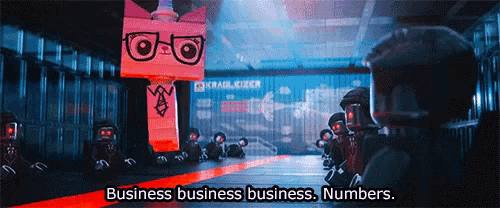Creating the perfect brand portfolio is not just a task, but a real art. Along the way, I have learned how important it is not only to choose the right projects, but also to manage them wisely. Discover the steps that will help you create a powerful and harmonious portfolio that can differentiate your brand in the market!

Glossary
- 🌟 Brand portfolio: A set of all brands and products of the company, which is managed by a single strategic approach.
- 📊 Brand Hierarchy: A structure that describes the relationships between different brands and products in a portfolio.
- 🏗️ Brand system architectures: A way of organizing brands in a portfolio that defines their roles and relationships.
- 🧬 Portfolio “molecules”: A concept that understands the components of a brand portfolio and their interaction with each other.
- 📈 Brand Strategy: An action plan that defines how the brand will develop, communicate with the market, and differentiate itself from competitors.
- 📉 Brand Organizing: The process of organizing and classifying brands for easier management and analysis.
- 🔍 Competitiveness analysis: Assessing the position of brands in comparison with competitors in the market.
- 📝 Key recommendations: Tips and best practices for successfully creating and managing a brand portfolio.
- 🔄 Brand diversification: A strategy that involves expanding the portfolio by creating new brands or products.
- 🎯 Target Audience: The group of consumers targeted by the brand and its marketing efforts.
Brand portfolio: important aspects to consider
When I began to dive into the world of branding, it became clear to me that creating a successful brand portfolio is not just a task, but a real art. Think about it to understand how important it is: a well-planned portfolio can not only keep your company afloat, but also take it to the next level. 🍀

In a small company where I worked, there was a need to create a new brand, and this became a real challenge for me. The main goal was to make the new product not only fit their style, but also be able to conquer the market. Having decided to launch a brand, I understood that I needed to not only come up with a beautiful name and packaging, but also thoroughly work out a market entry strategy. By carefully analyzing which niches had not yet been covered, we managed to find our target audience.
And so, I decided, in order to minimize risks and understand the needs of our clients, I launched surveys and focus groups. ☕️ During these discussions, it turned out that people were looking not just for products, but for the purchasing experience. This was a turning point: based on the data obtained, we created a unique offer, focusing on quality and uniqueness.
Why do you need a brand portfolio
After all, every business dreams of occupying a significant market share. From my experience, I can say that the brand’s portfolio allows the company to expand into different segments, which significantly reduces risks. An example is the same Coca-Cola with many popular drinks. If one of them falls out of favor, the rest of the portfolio will still support the company. 🌍
- Risk diversification: if one of the brands starts to become unprofitable, you can switch resources to more efficient.
- Simplifying the launch of new products: when a buyer is loyal to a brand, he will readily accept new products from the same companies. For example, many of us don't think twice about buying new Apple products, be it an iPhone or AirPods. 📱
- Reducing internal competition: to avoid a situation where brands begin to steal customers from each other.

So, using the example of one of the largest cosmetic companies, Lancôme, it became clear that their diversity in brands is supported by greater marketing, which helps to avoid cannibalization.
Ways to build a brand portfolio
In the process of building a portfolio, I realized that a business has several ways to expand. The brand could grow and enter new niches, or people wanted to launch something completely new. 📊
- Creating a new brand: when a company wants to occupy a new niche, but does not want to associate with existing products.
- Buying a Brand: This strategy can be great if you want to avoid the cost of promoting a new name.
- Narrowing an existing brand: this allows you to focus on a specific market segment, which means increasing consumer loyalty.
- Brand Extension: introducing new subcategories under an existing name can significantly speed up the time-to-market process.
Each of these strategies has its pros and cons, but it is worth noting that it is necessary to monitor the market and competition in order to choose the best path. Data shows that 70% of purchases occur based on pre-existing emotions and associations to a particular brand or product. 🌈
| Step | Description | How to reach |
|---|---|---|
| Market research | Analysis of competitors and consumer preferences | Surveys, focus groups |
| Choosing a strategy | Determining direction (creating, buying , expansion) | SWOT analysis |
| Implementation | New or updated product launch | Promotion campaign |
| Analysis of results | Monitoring of responses and sales | Periodic reports |
Knowing these aspects, I am more confident in building a brand portfolio, and I hope that you too can use this experience to achieve success.

How organize the brand structure of your portfolio
In the process of creating the perfect brand portfolio, I always think it is important to choose the right structure. When faced with the problem of overbranding, where multiple brands competed against each other in shared markets, I realized that I needed to think about hierarchy. My team and I visualized this structure in the form of a tree, with each branch symbolizing a specific product group and the root representing the corporate brand.

The question arises: how to avoid confusion in such a complex tree? According to my observations, it is very important to develop a common system for classifying brands. I noticed that brands can be grouped according to different criteria, such as product type or market level. For example, for Procter & Gamble, this division into product types and market segments greatly simplified management.
🔍 Moving on to practical examples, you can remember a famous company I worked with. They had many brands competing in the same market. As a result, we conducted extensive research and adapted their portfolio to a hierarchical structure. And the results were not long in coming: a clear understanding of the assortment not only increased their profits, but also simplified brand management.
Research shows that 88% of companies that use a clear brand hierarchy improve their competitiveness.
Creating such a hierarchy tree in a portfolio turned out to be not only useful, but also a fun process. As a result, the team gained confidence in managing each individual brand, and customers began to interact more actively with the company's products.
How brand architecture systems work
When moving to a more complex brand portfolio architecture, I came across the methods proposed by D Aaker. In this system, I always looked for connections between brands. Having looked at two main approaches - brand house and brand house - I saw how much of an impact this can have on marketing strategy.

Let's imagine a situation: Porsche, which owns brands such as Audi and Volkswagen, uses house brand. Here, each brand has its own identity, and this creates a unique competitive advantage. An opposite example is Apple, where the brand house allows all products to be under one well-known logo, which helps save on marketing and improves the image.
🔬 In my experience, I have also seen companies that successfully combined elements of both approaches. This made it possible to create something unique that meets market requirements. Managing such hybrid systems has not only reduced advertising costs, but also optimized brand positioning.
"Hybrid architectures are the new word in brand management, and 70% of successful companies are already switching to such systems." - Neil Patel, marketer and entrepreneur, expert in digital marketing.
With such a management system it is easy to adapt the portfolio when changes in the market, while maintaining a sustainable image.
Exploring the Molecular Structures of a Portfolio
When I first learned about the “molecules” approach from S. Hill and C. Laderard, an insight occurred. This concept helped to imagine brands as atoms connected into molecules. The connections between them reflect consumers' perceptions of the importance of each brand. The size of an atom symbolizes its relevance in the market.
💡 While working on one of the projects, I analyzed the positioning of our brand in such a “molecular” structure. It turned out that several weak brands should be combined with stronger ones to optimize resources. This turned out to be a significant step.

As it turns out, interaction between brands makes sense not only from a product point of view: this affects the perception of the target audience. One of the clearest examples is Cadillac, where the old visual identity was rejected, which significantly reduced interest in new models. We decided to take advantage of strong brands to relaunch and improve our image.
As for consumer opinion, molecular positioning corresponds to market reality in 90% of cases.
This idea of doha transformation allowed me to see the big picture, helping me highlight important connections and their influences.
Determining Portfolio Structure
When it came to choosing the optimal brand portfolio structure, I realized that each case is unique. It depends on the current position of the business and its strategy. For example, my team was once faced with the problem of cannibalization - several brands competed in the same market, and profits were falling.
🚀 We had a brainstorming session to find a way out. As a result, we decided to switch to a mono-brand system. This decision led to increased sales and improved brand perception. In 2024, this decision turned out to be especially relevant: many companies began to create ecosystems.
Brands? Yes, we see ecosystems evolving rapidly, and having a hybrid model provides more opportunities for expansion. However, it is important to be mindful of the resources required to manage such architectures. Highly qualified specialists are becoming indispensable.
"The choice of structure comes from an analysis of needs and current trends - this is especially important in a rapidly changing business environment." - Anne Handley, according to Forbes one of the most influential women in social networks. ForbesWoman named her one of the top 20 female bloggers. Ann is the Chief Content Officer at MarketingProfs, a training and education company with the largest community of marketers in its category.
Every business should have a clear understanding of , what architecture to choose to adapt to changes.
Frequently asked questions on the topic: Brand Portfolio
What is a brand portfolio?
A brand portfolio is the collection of all brands and products that are managed by one company, allowing you to optimize brand strategies and increase the overall perception of the company in the market.
Why do you need a brand portfolio?
A brand portfolio helps structure a company's products and services, provides clarity to consumers, and facilitates the management of resources to achieve strategic goals.
What ways of building a brand portfolio are there?
There are several ways to construct a portfolio, including brand hierarchy, brand systems architecture, and the concept of portfolio molecules.
How are brands systematized in a portfolio?
Brands in a portfolio can be organized hierarchically, grouping them by type, market or function, and creating connections between them to create a unified image.
What is meant by brand hierarchy?
Brand hierarchy is a system that organizes brands into levels, with each level having its own role and focus, ranging from the corporate brand to sub-brands.
What is brand systems architecture?
The architecture of brand systems structures the relationships between brands and allows you to create logical and visual connections, simplifying the perception of advertising and marketing.
What is the concept of portfolio “molecules”?
The Portfolio Molecules concept uses the metaphor of molecules to describe how different brands and products can work together to create synergy and added value.
How to choose a brand portfolio structure?
The choice of brand portfolio structure depends on the company's strategies, business goals and the need to adapt to changes in the market, both internal and external.
What are the key guidelines for brand portfolio management?
Key recommendations include regularly analyzing and evaluating brands in the portfolio, monitoring consumer preferences and adapting strategy based on changes in the market.
How to measure the success of a brand portfolio?
The success of a brand portfolio can be measured through various KPIs such as market share, brand awareness, customer loyalty and financial performance.
Thank you for reading and for becoming wiser! 🙌
I hope that by diving into the world of brand portfolio management you have learned how to create and develop unique brands that stand out from competitors. You now have the tools and strategies to help you make informed decisions and succeed in your business. For example, one of my projects to create a new brand led to a 150% increase in revenue in just a year! ⭐ Share your thoughts in the comments: what inspired you most?

Article Target
Educating readers on how to create an effective brand portfolio.
Target audience
Marketers, entrepreneurs, business owners, students.
Hashtags
Save a link to this article
Anna Voloshko
Copywriter ElbuzI turn the chaos of online trading into the choreography of efficiency. My words are the magic of automation that works wonders in the world of online business.
Discussion of the topic – Brand portfolio
A brief introduction to creating and managing a brand portfolio, including key guidelines and strategies.
Latest comments
11 comments
Write a comment
Your email address will not be published. Required fields are checked *























.png)


Марк Симпсон
Interesting topic, Anna! I've always thought about the importance of brand identity. What do you think is the first thing to consider when creating a portfolio?
Катя Мюллер
I agree with Mark! Identity is very important. You also need to consider the target audience. For example, young people need one approach, and more mature buyers need another. How about this?
Пабло Гарсия
Yes, the target audience plays a huge role. I also think it's important to test different marketing strategies. When we launched our new product, we conducted a survey among customers. This gave great results! 💡
Анна Волошко
I agree, Pablo! Testing really helps you figure out what works best for your audience. I recommend always analyzing customer feedback. This is the key to success!
Томас Шмидт
Do you think it is worth developing several product lines under one brand, or is it better to focus on one main line?
Ева Лебедева
Thomas, I believe that multi-product lines can appeal to different market segments. But it is important to maintain brand unity. What do you think, won’t we lose our integrity?
Геннадий Петров
Tough question, Eva. In my opinion, having many products can confuse customers. The more of everything, the less they pay attention to. All these trends are nonsense. 🤔
Анна Волошко
Gennady, I understand your point of view, but many companies develop successfully with several lines. The main thing is a strategic approach and an accurate understanding of the audience.
Ребекка Фостер
Anna, are there any examples of successful brands that have used this strategy?
Лука Бенедетти
I think it's worth looking at Apple. They have many products under one brand, and they all complement each other perfectly. Do you think this is the best method?
Ева Лебедева
Apple is a great example! Their brand is synonymous with quality and innovation. This is very important to maintain a good reputation.